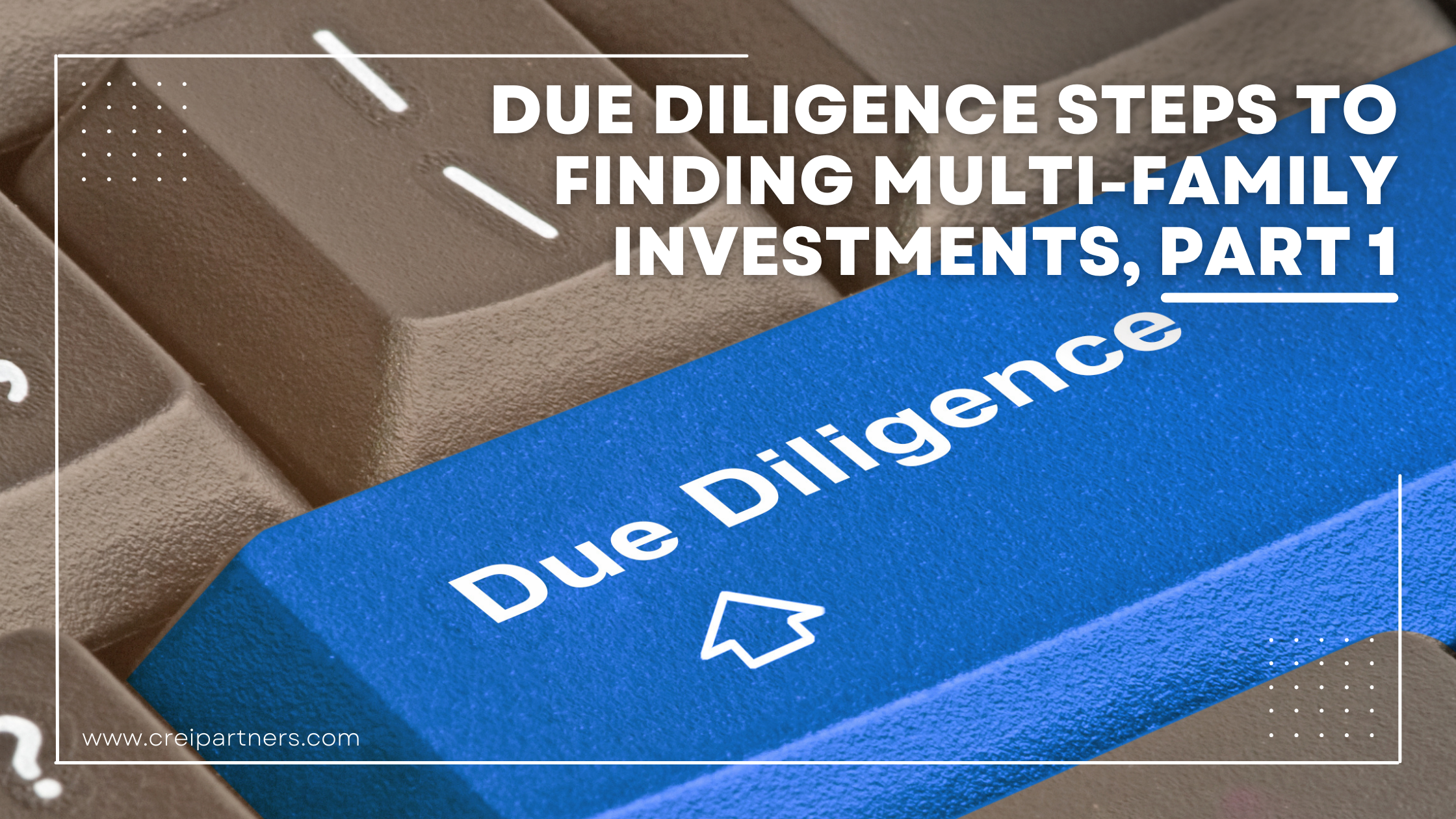The truth about real estate investing is anyone can find a property to buy. The issue comes with non-experienced investors/sponsors, or investors who are not patient. Inexperienced syndicators sometimes overpay for the asset, or have a business plan that is tough to implement. In the sea of multi-family real estate, the waters are red from deal sponsors competing for properties. This competition fuels increased prices in real estate, which reduces investor returns. Despite the red waters, there are still opportunities for those who are creative, patient, and disciplined in their search. Investment due diligence is essential to protect your capital and mitigate risk as a limited partner passive investor.
This is the first of two blogs, which will shed light on what goes on behind the scenes as a Deal Sponsor, and why finding the right opportunity can take months or more to close. From a passive investor standpoint, this is a good thing if you are seeing your Deal Sponsor staying patient and disciplined in finding the right opportunity for your capital. You benefit from their countless hours of work and experience by enjoying passive returns and equity growth! Below are steps for active investors to take when finding the right investment opportunity. Additionally, passive investors can see what is involved leading up to receiving the investment marketing package.
1. Start with the Mindset.
If you believe there are opportunities there will be, if you think there are no opportunities then there will not be opportunities. Also, determine your why as it will be tested during this process.
2. Get Educated and Build the Team.
Education comes through experience, and to gain experience you need a foundation that can start with reading books, listening to podcasts, and attending conferences. Building the team is part of the education process as you want to build the team stronger and more experienced than you. It is how you go from Good to Great!
As you build a team find a mentor, build relationships with brokers, property managers, lenders, insurance brokers, construction groups, and other investors/partners. Determine your needs and fill in the gaps with team members who can help you. Education and building the team are combined as one because they are never-ending and will need to be continuously built. Investment due diligence practices are a strategy best developed through mentorship and education with a well qualified, experienced mentor.
3. Location, Location, Location.
You likely have heard this before about real estate investing. This is more than finding the city you want to invest in, but going into the sub-market to determine population growth, median income, crime, and economic development. Determine the areas of the city you want to invest in before underwriting opportunities, as your time is valuable. I have learned this the hard way in underwriting the deal. I feel good about it, and then begin discussing it with my partners who then may advise this is not a good submarket for investing. This circles back to “build the team and get educated”, it is a never-ending process…
4. Property Condition Attributes.
I have heard the saying chillers are killers. It did kill one of my deals, but what may not work for me can work for others. Determine what property condition attributes you want to invest in. We are focused on 1970-2000, Class B and C garden-style apartments, with a minimum of 70 units in Austin, San Antonio and Houston. Having focused and defined boundaries helps to maximize your time while also looking at other deals.
Are you okay with an older property that may require more maintenance? Do you know if the property has Federal Pacific Stab-Lok breakers which can drastically increase fire risk and insurance premiums? Does the property have aluminum wiring? When deals come your way, a simple pass or go on the deal will allow you to stay within your condition attributes. Or at a minimum, provide you insight on what needs to be included in your capital budget.
5. Deal Analyzer and Market Survey with Rent Comps.
Your mentor will have a deal analyzer they like to use, but you can also find them online or websites such as BiggerPockets. Stay conservative in your expenses, such as real estate taxes, and don’t assume insurance rates will remain the same—contact an insurance broker. Staying conservative may kill deals, as less aggressive numbers may kill deals. However, your investors will appreciate it, and you will get sleep during the hold period! Ensure your market survey of nearby comps supports your rent growth expectations.
As an example, on a property I was underwriting, I initially projected rents could increase $150 per month due to one lease getting that rent bump. However, I went back to look at the highest 10% rents on rent roll, and determined the $150 increase is not supported by the property, and is an outlier. The market survey from other comp properties did not support the increase either. Try to compare rents on a Per Square Foot (PSF) basis within a 1-2-mile radius. Also, going back to the 2nd bullet point, involve your property management company (team) in the process to help with rent comps and budget projections.
As you can see it is a lot of work, time and commitment to find the right investment opportunities. Investment due diligence and underwriting is a key strategy to help you go from good, to great, in your investment journey. If you are getting active in multi-family real estate investing or would like to learn more about passively investing please reach out! Stay tuned for the final steps on our next blog on additional steps!
Additional Resources:
Due Diligence Steps To Finding Multi-Family Investments, Part 2
Crafting a Profitable Strategy While Mitigating Risk in Real Estate Investing with Joel Friedland


 Subscribe to our newsletter so you never miss out on new investment opportunities, podcasts, blogs, news and events.
Subscribe to our newsletter so you never miss out on new investment opportunities, podcasts, blogs, news and events.